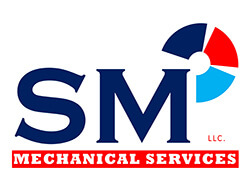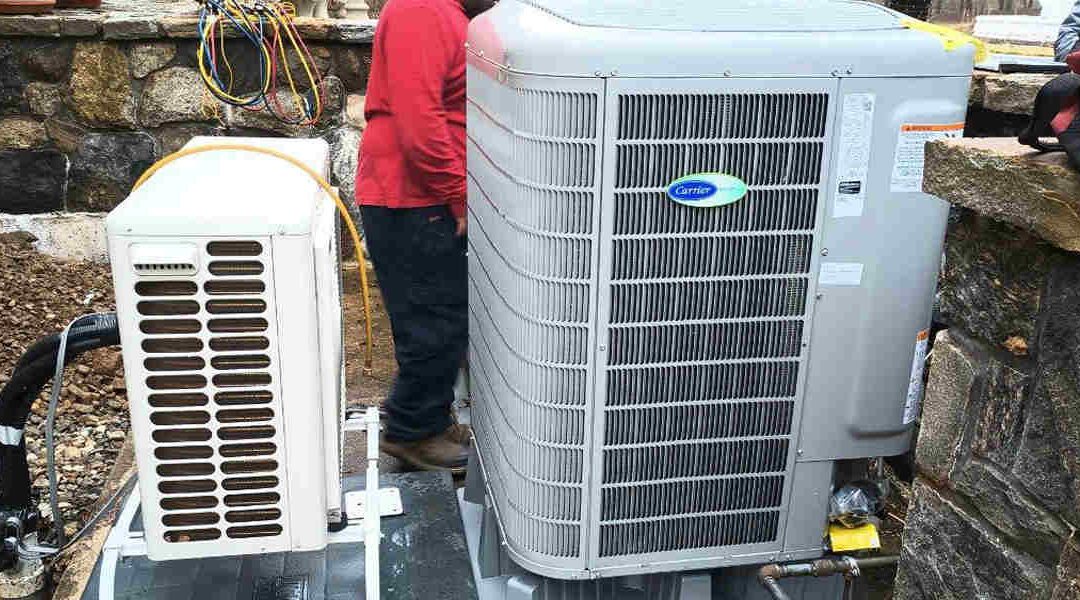Carbon monoxide is one of the scarier gases because you can’t smell, see, or taste it. You’ll need a carbon monoxide detector that will alert you when it’s present; otherwise, you won’t know it’s there. With such a scary substance lurking about, you might be wondering, “Can you get carbon monoxide poisoning from an AC?”
SM Mechanical Services, Glastonbury CT’s best HVAC services, is here to ease your mind about AC units and what dangers they may present. AC units won’t produce carbon monoxide, but there are still some dangers associated with it you should be aware of for your safety.
Are AC Units in Glastonbury, CT, a Risk?
Electric AC units won’t produce carbon monoxide. Carbon monoxide comes from combustible substances like coal or gas. Electricity can’t create poisonous gas, so the AC unit isn’t the problem.
It should be noted that there are AC units that have natural gas, but even these rely mostly on electricity. Residential buildings in Glastonbury, CT, are more likely to have completely electric units.
But can you get carbon monoxide poisoning from an AC using natural gas? It’s possible, so it’s important to keep your unit maintained well if you have one of these in your home and business. Use carbon monoxide detectors near your vents and by the unit so you can be alerted when something goes wrong.
What’s Happening When Your AC Seems Like the Culprit
If the answer to “Can you get carbon monoxide poisoning from an AC?” is “No,” what’s going on?
If you have carbon monoxide in your home but you have an electric AC, there’s a reasonable explanation for it that doesn’t involve electricity mysteriously creating toxic gas.
It’s the Furnace
Furnaces create carbon monoxide which makes them light up and function as intended. Furnaces are made to release the toxic fumes out of the exhaust, but sometimes, things can go wrong and it will be released into your home instead.
You may think this isn’t a big deal if the furnace is located on the opposite side of the house, but the air ducts can suck up the gas and disperse it through your home.
So, if your detectors suggest the gas is coming from the AC vents, it probably is, but the source is the furnace, not the electric AC unit.
Check Your Gas Stove
Gas stoves may develop a gas leak. It could be due to a broken gas line, or it can happen when you try to ignite a burner but nothing happens.
When you ignite a burner, you’ll hear clicking followed by a flame. If the flame doesn’t appear soon after, turn off the burner and try again. Carbon monoxide releases when the burner clicks.
Gas-Powered Water Heaters Are a Risk
Many water heaters are electric these days, but gas-powered heaters are still popular and can be a source of carbon monoxide if it has a gas leak. Seek yearly maintenance for your water heater to ensure the carbon monoxide exits where it’s supposed to so it doesn’t make its way into the air ducts and throughout your home.
It’s wise to put a carbon monoxide detector right by a gas-powered water heater. Water heaters are often located away from the living space, like in a garage or closet, so find a detector that’s loud, or that can notify you on your phone. It should be able to wake you up at night.
Engines and Generators
If you can’t find the source, think about other items in your home that use gas. It could be your car, fireplace, lawncare equipment, power tools, or even your clothes dryer.
When you call SM Mechanical Services in Glastonbury, CT, to repair the gas leak, we’ll inspect your gas lines to see what’s connected to it to figure out where the leak is coming from.
Carbon Monoxide Poisoning Symptoms
Small amounts of carbon monoxide in the air are normal, and it can react with water vapor to turn into carbon dioxide and hydrogen, so it’s not all bad. However, you likely won’t notice when there’s too much because it doesn’t affect the air quality. Can you get carbon monoxide poisoning from an AC, and will it make you sick?
Carbon monoxide poisoning is a serious condition that needs immediate treatment and can come from any gas-powered appliance or tool in your home. It kills people quietly because as you breathe it in, it goes into the bloodstream. If you continue breathing it, it will kill you, but if you manage to escape the area, you may have health problems because of how much is in your system.
Common carbon monoxide poisoning symptoms include:
- Vomiting and nausea
- Dizziness and headaches
- Weakness, fatigue, and fainting
- Confusion and memory loss
- Chest pains and shortness of breath
What To Do If You Suspect Carbon Monoxide in Glastonbury, CT
If you think there is carbon monoxide in your home in Glastonbury, CT, prioritize breathing fresh air. Step outside for a moment, then open windows in your home to help air it out. Call SM Mechanical Services so we can find where the gas leak is coming from so we can make your home safe again. We offer same-day emergency services for times like these.
Seek medical treatment immediately if you or someone else experiences symptoms of carbon monoxide poisoning. The gas is a silent killer, so any exposure to it should be taken seriously and treated with urgency, especially if you have any dizziness or trouble breathing.
Call SM Mechanical Services Today
Can you get carbon monoxide poisoning from an AC? Do AC units emit harmful gases? You can’t get it from an electric-powered AC unit, but one that has natural gas can become a threat if it leaks. Carbon monoxide poisoning is more likely to come from gas-powered appliances like furnaces, water heaters, stoves, and vehicles.
If you suspect you have a carbon monoxide leak in your home, call SM Mechanical Services in Glastonbury, CT, at 860-296-5100. Let us know if you need emergency services, and we’ll be there quickly.

